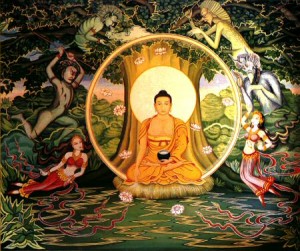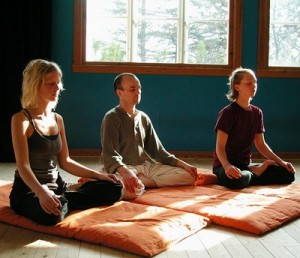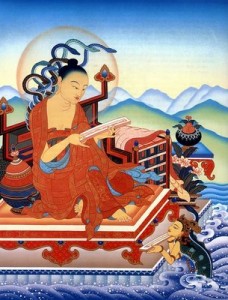The following is an excerpt from a teaching by Jetsunma Ahkon Lhamo called “Antidoting the Mantra of Samsara Su2-18”
When one actually enters onto the path and begins to practice Dharma, one begins with teachings associated with Ngundro or Preliminary Practice. Normally what happens first is one receives teachings that cause one to turn the mind toward Dharma. My experience has been that for westerners that teaching needs to be deep. It needs to be extensive. It needs to be profound. It needs to be logical, meaningful. It needs to make sense. It needs not to rely on simply blind faith. There needs to be true understanding in order for the new student to actually take hold and actually hook in. That’s been my experience.
My experience has been that sometimes a student, through whatever circumstances, is introduced to Dharma at a more advanced level, by taking some empowerment or something, but they have no understanding of what they’re taking. They finally find out that now they have a practice commitment and they have no idea what that means! That sort of thing can be really terrifying and frightening for a new practitioner. And furthermore, since there is no understanding, it’s almost like trying to make something O.K. on the surface that in fact on a deeper level is not yet O.K. or is not yet suitable or acceptable.
So I’d like to spend some time talking about how one would actually begin to practice on the path, not necessarily the hows and wherefores, because that will be done in the next period of time, both by Khenpo and then after he finishes, I will continue and continue to develop the new practitioners with that kind of understanding. But I would like to actually address some questions that newer practitioners over the years have expressed again and again and again. These questions are interesting because they come sort of loaded with preconceived ideas. You can understand what the preconceived ideas are by hearing the questions.
So let me begin by indicating to you what some of those ideas or some of those questions might be. Here’s something that newer practitioners say all of the time. When they first get introduced to the idea of Dharma, they are normally attracted for whatever reason they are attracted. And it varies with each person. It’s according to their habitual tendency, their karmic propensity, their connection, whatever. Whatever that is, that will indicate how they enter onto the path. For some people it’s the attraction to what seems like something very exotic. For some people it’s the attraction to something that is a living, ongoing experience, spiritually speaking. That is to say, it isn’t like the way perhaps, many of these people practice, let’s say, Christianity which is to go to church once a week, or twice a year, or whatever it happens to be, and then in between not give so much thought to their religion.
Many people who approach Buddhism are interested in something that really travels with you, that is more a part, more distinctly a part of your life, and more a developed philosophy that can be a true guidance in one’s life. And for other people, they are simply connected to the teacher. They see the teacher and they don’t know what this is about, but they feel that connection and they go in that direction. For other people, they’re looking for something, and this looks like a nice thing to check out. There are many different ways that people approach the path, but generally speaking, most people, when they approach anything new, including the path of Dharma, they don’t really approach it with the idea of how hard they want to work at it. You know, when you approach a new job, the idea of a new job, you don’t approach a new job because you know it’s just going to be a real back breaker. I mean, you don’t think, hey I’m really looking forward to the grueling nine to five, that sort of thing! That isn’t what attracts us.
What attracts us is the payoff, the money, or the opportunity to do something exciting. There are things that attract us, but it’s not the hard work.
Copyright © Jetsunma Ahkon Norbu Lhamo. All rights reserved









